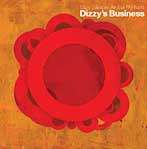Home » Jazz Articles » New York Beat » Dizzy's Dream
Dizzy's Dream
Among jazz insiders and bebop elder statesmen, the Dizzy Gillespie Big Band has always been regarded as a major achievement - of the same magnitude as Dizzy's pivotal role in the Minton's Playhouse bebop origins. But because of the paucity of a recording chronicle ( this was not the only band to suffer because of unavailable recording opportunities) Dizzy's Big Band is practically unknown to contemporary jazz fans. The most outstanding accomplishment recorded in jazz textbooks is the appearance of Chano Pozo and Dizzy's utilization of the legendary Cuban's rhythmic genius to debut his revolutionary "Afro-Cuban orchestral sound.
Dizzy worked hard with his bebop band writing and arranging as well as producing and playing. The band allowed such strategic figures as James Moody, Ernie Wilkins and Jimmy Heath to achieve the notoriety that would propel their futures. Dizzy wrote important music—"Con Alma , "Blue 'N Boogie , "Tour de Force —that would shape the future of big band bebop for the next half century. But, as they say, much of the legacy went for nought at the time—Americans were certainly not ready to support big band bebop.
But the memory of that accomplishment would not die. During the ensuing decades Dizzy often dreamed of a resurrection. I had produced a concert with his small group in the 80's and remember asking him if he would like to get the big band charts together for a concert idea I had to reunite him with Johnny Hartman. The discussion took place in his dressing room and I can still see the proverbial twinkle in his eye when I brought up the subject... That concert never took place but the idea lingered and a few years later he had organized his "United Nations band and called me to arrange some dates. The UN band was really gaining some headway but then Dizzy passed on...
 Finally, in 1998, the Dizzy Gillespie All-Star Big Band was organized, performed in concert halls and festivals all over the world and, in 2004, released its first album—a four star Downbeat award winner. The second CD Dizzy's Business (on the MCG label) will be released on September 26 and it continues the legacy in fine fashion. When the band was formed hundreds of jazzers who, at one time or another, had worked with Dizzy stepped forward. Slide Hampton became its leader and Dizzy alums such as James Moody, Frank Wess, Claudio Roditi, Jay Ashby, Randy Brecker, Jimmy Heath, Mulgrew Miller serve dutifully in the ranks. Roy Hargrove is a special guest on the new outing and Italian songstress Roberta Gambarini also lends her considerable talents to the effort. The alums also contribute arrangements of the old tunes originally associated with the band.
Finally, in 1998, the Dizzy Gillespie All-Star Big Band was organized, performed in concert halls and festivals all over the world and, in 2004, released its first album—a four star Downbeat award winner. The second CD Dizzy's Business (on the MCG label) will be released on September 26 and it continues the legacy in fine fashion. When the band was formed hundreds of jazzers who, at one time or another, had worked with Dizzy stepped forward. Slide Hampton became its leader and Dizzy alums such as James Moody, Frank Wess, Claudio Roditi, Jay Ashby, Randy Brecker, Jimmy Heath, Mulgrew Miller serve dutifully in the ranks. Roy Hargrove is a special guest on the new outing and Italian songstress Roberta Gambarini also lends her considerable talents to the effort. The alums also contribute arrangements of the old tunes originally associated with the band.
The Dizzy Gillespie Big Band dream is alive and well indeed. Its master would be proud.
< Previous
Lontano
Next >
Out Trios, Volume 4: Almanac
Comments
Tags
For the Love of Jazz
 All About Jazz has been a pillar of jazz since 1995, championing it as an art form and, more importantly, supporting the musicians who create it. Our enduring commitment has made "AAJ" one of the most culturally important websites of its kind, read by hundreds of thousands of fans, musicians and industry figures every month.
All About Jazz has been a pillar of jazz since 1995, championing it as an art form and, more importantly, supporting the musicians who create it. Our enduring commitment has made "AAJ" one of the most culturally important websites of its kind, read by hundreds of thousands of fans, musicians and industry figures every month.























